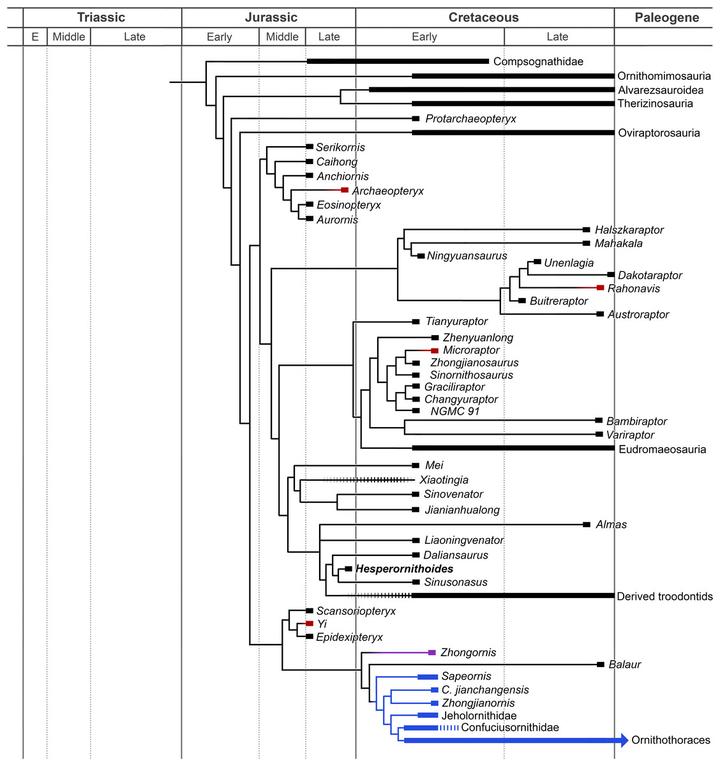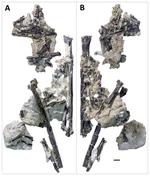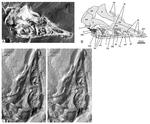Origin of Avian Flight
 Time-callibrated phylogeny showing multiple origins of theropod aerial behavior, and a relatively late origin of avian flight
Time-callibrated phylogeny showing multiple origins of theropod aerial behavior, and a relatively late origin of avian flightThe origin of birds from theropod dinosaurs is one of the great locomotory transitions in the history of life. Unlike the situation with basal members of other flying vertebrate clades - bats and pterosaurs - the fossil record of early flying dinosaurs is remarkably complete, including excellent preservation of taxa exhibiting incipient flight anatomy. That means the ecological context and selective pressures that drove the transition to avian flight are possible to document in detail rarely available to us.
I have been working on the origin of birds for over two decades, my first platform presentation back in 2000 at the annual Society of Vertebrate Paleontology conference was on the topic (Primary and caudal feathers as locomotory adaptations in maniraptoran theropods). Ongoing goals include disentangling the “ground up vs trees down” debate, creating a framework to allow competing models of bird origins to be tested more explicitly against the fossil record, and documenting how the history of dinosaur research and typological thought has influenced modern bird origins (spoiler: Not for the better!). Scroll down to find papers, presentations, and blog posts connected to my origin of avian flight work (and the colleagues and co-authors who have collaborated with me). Look for more soon!



